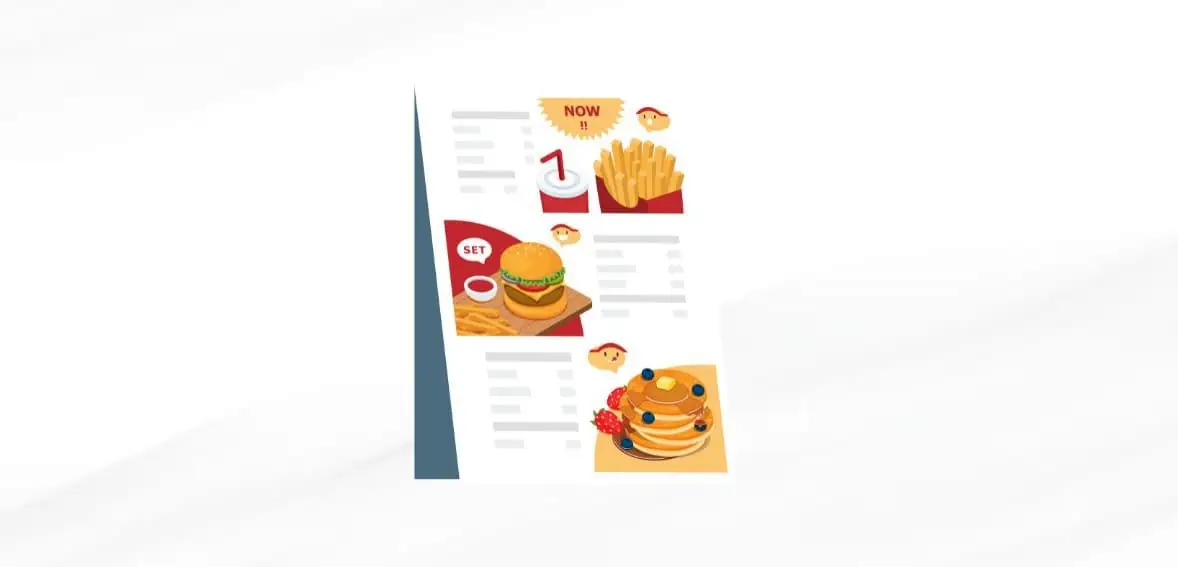In the fiercely competitive restaurant industry, standing out requires more than great food; it demands a bullet-proof marketing strategy. This guide is packed with restaurant marketing tips to attract and retain customers, turning first-time visitors into loyal regulars. From explaining post-pandemic dining expectations to utilizing creative and strategic ideas, we’ll help you differentiate your establishment in a crowded market and keep your diners returning for more.
Why is Restaurant Marketing Important?
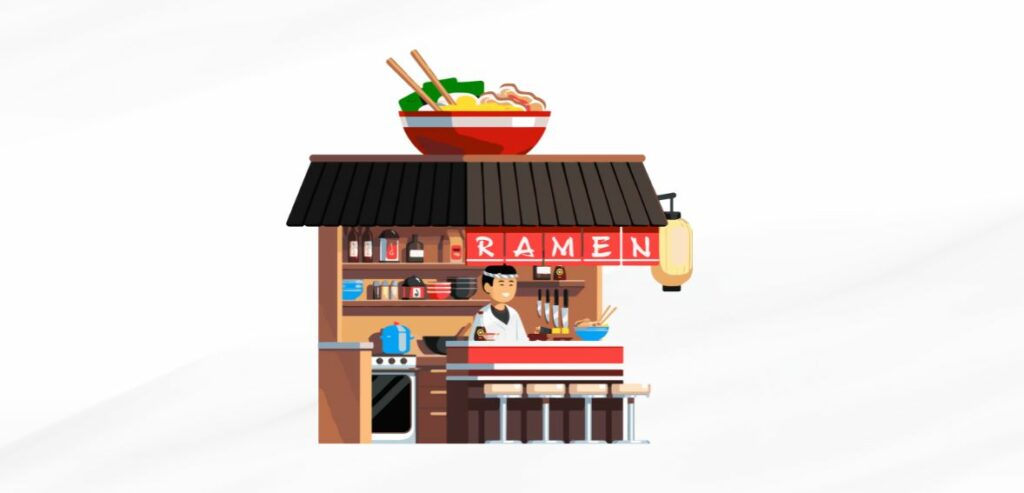
Restaurant marketing is important to increase sales and improve brand image. The marketing strategy can have different channels, including social media. 82% of American restaurants employ a social media marketing strategy. Remember, marketing is not a one-size-fits-all approach but a series of coordinated efforts across various platforms to reach your target audience effectively. Here are several reasons why marketing a restaurant is crucial:
- Customer retention: Marketing for your restaurant can enhance your brand’s popularity, attracting customers to return for another visit.
- Staff building: Building a name in the restaurant industry focuses on revenue and draws talented professionals to your doorstep. “Hard to find” restaurant staff like chefs, servers, and other back-of-the-counter (full-time and part-time) staff will be at your disposal just because your brand is popular and has a positive brand image.
- Greater reach: Various marketing strategies enable you to connect with new markets, including demographics or travelers passing through your restaurant’s location.
- Improved collaboration: Engaging in restaurant marketing improves community relationships and allows cooperation with other platforms and businesses, expanding your restaurant’s visibility and outreach.
Best Strategies for Elevating Restaurant Sales Through Marketing

Your marketing strategy can be simple. Here are a few inventive restaurant marketing concepts you can try out.
1. Build a Distinct Brand Identity

Establishing a strong brand identity is essential in your restaurant’s marketing strategy. Every nook of your establishment, from your name and logo to the ambiance and colors of your restaurant, contributes to creating a distinct, memorable, and easily recognizable impact. This impact could be positive or negative.
To create a “positive” impact, define your restaurant’s mission and target audience. As an owner/manager, you should be completely clear on your restaurant’s aim, whether you want to cater to families seeking a relaxed atmosphere or students searching for budget-friendly lunch options. Then, select a color scheme that aligns with your brand identity. Understanding the psychology of colors can also influence consumer behavior, with bright red often used in fast-food settings to stimulate appetite and encourage quick dining.
Next, choose a name and design a logo that reflects your business ethos. Whether it has a luxury touch, like “Luxe Bites Brasserie,” or something minimalistic, like “Nia’s Vegan Kitchen,”
Consistency is key to maintaining your brand identity across all platforms. Ensure your menu, advertisements, and social media pages reflect the same colors, style, and tone. Building a memorable brand extends beyond visual elements and provides exceptional customer experiences. It also helps in promoting word-of-mouth recommendations, which are invaluable marketing strategies. Follow these simple steps to create your own distinct brand identity:
- Step 1: Craft a clear mission statement that encapsulates your restaurant’s purpose and reason for existence.
- Step 2: Establish your brand’s position in the market by analyzing factors such as pricing, product offerings, promotional strategies, and location compared to competitors.
- Step 3: Define your brand’s voice, including the tone and language used in customer communication.
- Step 4: Establish your brand’s visual identity, encompassing elements like your logo and interior design.
After defining your brand’s identity, maintain consistency across all marketing materials to leave a lasting impression on customers. Ensure your restaurant’s slogans and taglines reflect your brand voice.
2. Build Your Restaurant’s Website

Creating a restaurant website is vital in attracting new customers to your establishment. With proper SEO, your website can be a free advertising and marketing tool, especially for local searches like “best restaurants near me” on Google. When nearby users look for dining options, your website’s homepage can appear in their search results.
If they can easily access information such as your operating hours or menu on your website, they are more likely to choose your restaurant. A website serves as an extension of your physical restaurant and offers essential details. It should address common inquiries, such as how to make a reservation, to further engage potential customers. Here’s a simple overview of how to create an attractive website:
1. Choose a Domain Name
Selecting a domain name is a critical step in creating your restaurant website. Your domain should include your brand name.
2. Choose a Web Building Platform
A CMS serves as the foundation for your website, allowing you to design, host, and manage it without coding knowledge. Selecting the right platform is crucial to ensure ease of use and efficient management. Consider these popular options:
- WordPress
- Wix
- GoDaddy
- Squarespace
3. Prepare Your Content
Creating content for your website is one of the most essential branding tasks. It includes the text and images on each page, guiding visitors toward specific actions, such as making reservations or purchasing gift cards.
4. Design Your Website
Once your content is ready and your domain is secured, it’s time to build your website. You have two options: hire someone to do it for you or choose from the many templates offered by your CMS and build it yourself.
Always prioritize designing and optimizing your website for smartphone users. Ensuring mobile optimization enables seamless access to your site for those using phones and tablets.
5. Craft Your Restaurant Website Menu
Your restaurant’s online menu is the centerpiece of your web design. Showcase your culinary creations with captivating imagery and enticing descriptions. This isn’t merely a list of dishes, but it’s a marketing tool to attract visitors to your establishment.
However, ensure that essential information is included. Include details such as ingredients, dish variations, and potential allergens to cater to various dietary needs.
6. Enable Online Ordering
Offering online reservations or food ordering through your website can enhance convenience for your customers. Consider integrating delivery services or setting up a reservation system to streamline the process. Although it may require additional maintenance, it enhances convenience for your loyal customers.
Reservation or delivery options can be added to the website. The simplest way to implement this feature is to add a contact form or email address to your website. You can also provide a reservation phone number or add a live chat option. Make it effortless for visitors to inquire about menu options or make reservations. However, the best option is to add a reservation or booking system and an online food ordering system.
7. Ensure Your Website Stays Current
Regularly refresh your restaurant website with fresh images, updated menu items, upcoming events, and fresh blogs and articles. Frequently check your web-building platform for any available updates to maintain your website’s functionality and security.
3. Boosting Your Restaurant with Delivery App Ads
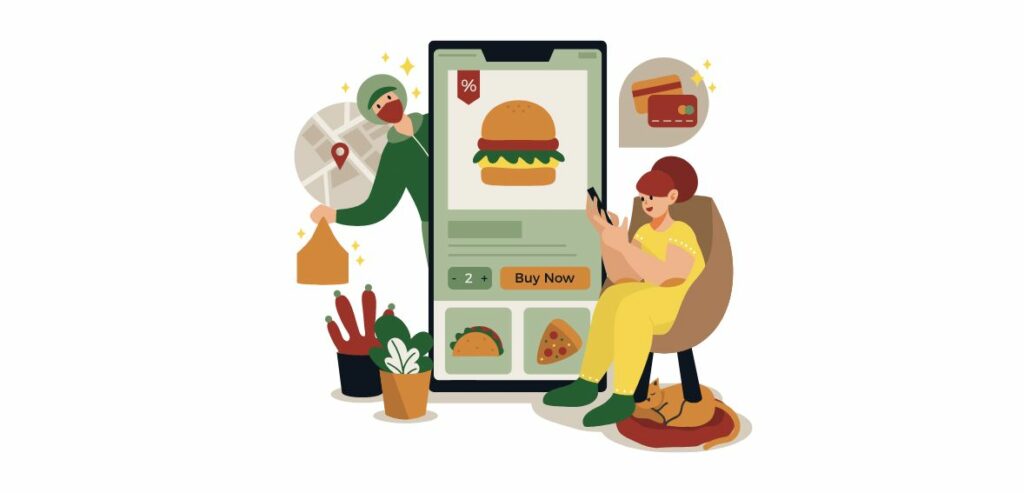
Your restaurant should also be on food delivery apps like DoorDash and Uber Eats. They provide many marketing tools that can help you promote your restaurant. These apps can also help you in enhancing your brand image and sales. Uber Eats, for instance, has something called Sponsored Listings. This feature makes your restaurant pop up in prime spots on the app for a specific time.
4. Create Your Google My Business Page
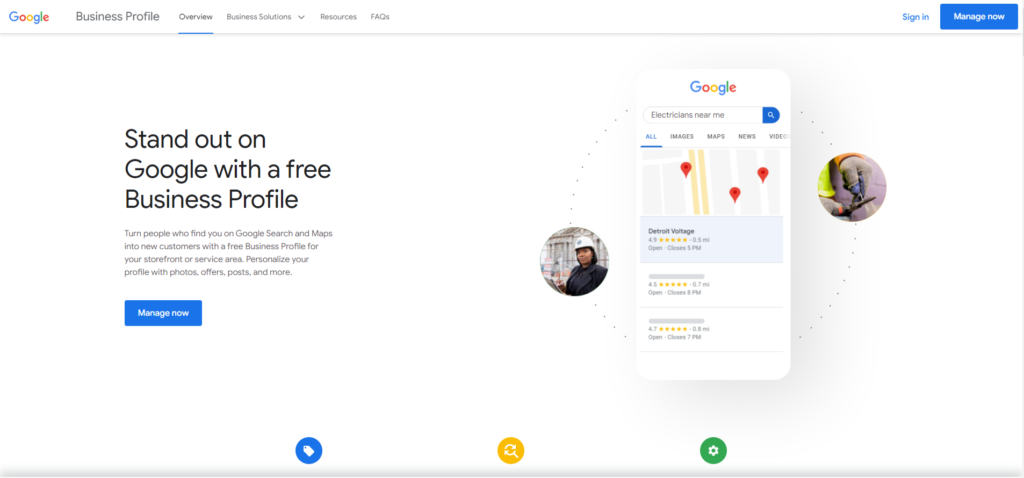
Image source
You should spend some part of your marketing budget on local SEO. This is one of the easiest ways to reach local customers searching for a nearby restaurant. Setting up your restaurant’s Google My Business page is a significant step in this direction. It is a powerful tool that is free.
Think of a Google My Business page as your restaurant’s official spot on Google. It’s not just good for your local SEO, but it also gives you control over how your restaurant shows up in searches. You can easily add important details like your address, phone number, and hours. Plus, you can post updates and gather valuable feedback from customers and visitors.
Setting up a Google Business Profile is a great move to get your business noticed online. Here’s a simple guide to get you started:
- Go to https://google.com/business.
- Log into your Google account. If you don’t have one, you’ll need to create it.
- Enter the name of your business so people can find you.
- Type in where your business is located.
- Select a category that best fits your business.
- Choose the primary category that tells people exactly what you offer.
- Add your phone number and website so customers know how to reach you.
- Confirm your listing to prove you’re the real deal.
- Now that you’re set up add photos, write a catchy description, use keywords to help people find you, and engage with customers by getting and responding to reviews.
5. Utilize Customer Data Platform

A restaurant CDP, short for Customer Data Platform, serves as a centralized system for managing guest data and integrating it with marketing tools. The term “CDP” emerged in 2013, reflecting the need for a solution amid the rise of new technology platforms in recent years. A CDP is a tool designed to assist hospitality establishments in gathering and organizing customer information, such as contact details, dining preferences, and purchasing history. By leveraging a restaurant CDP, businesses aim to gain deeper insights into their customers and deliver customized marketing offers and tailored experiences.
For instance, a restaurant CDP may store data on a customer’s favorite menu items, allowing staff to recommend those dishes during their next visit. Moreover, it enables restaurants to execute targeted marketing initiatives, such as sending personalized offers based on individual dining preferences.
Many restaurants use advanced CDPs, which collect data from various sources such as website analytics, social media, and point-of-sale systems. These platforms provide deep insights into guests’ preferences, interests, and behavior. CDPs are evolving by incorporating AI and machine learning, leading to more personalized experiences for guests. This technology is helping to address critical issues that hotels face today. Here’s how they’re making a difference:
- Breaking Down Data Silos: Imagine customer data as puzzle pieces scattered across different rooms. With a way to bring them together, you can see the whole picture. That’s where a CDP comes in. It acts like a gathering table, bringing all these pieces together into one spot. This means restaurants can finally get a clear view of their guests, making it easier to understand and serve them better.
- Boosting Personalization: Ever felt special when someone remembered your coffee order? That’s personalization. When restaurants have a partial view of their guests, making them feel special is easy. A CDP helps restaurants know their guests better, allowing them to tailor offers, suggestions, and messages specifically for each guest, just like remembering that coffee order.
- Improving Marketing: Marketing without knowing your audience is like shooting arrows in the dark. Restaurants may find it challenging to target their campaigns without centralized customer data. A CDP lights the way, helping restaurants understand who their guests are and enabling them to create more focused and successful marketing efforts.
- Enhancing Customer Engagement: Connecting with guests can be tricky. A CDP provides insights into what guests enjoy and how they like to be engaged. It allows restaurants to craft messages and experiences that resonate more deeply, strengthening the bond between the restaurants and its guests.
6. Make Your Food Photos Stand Out
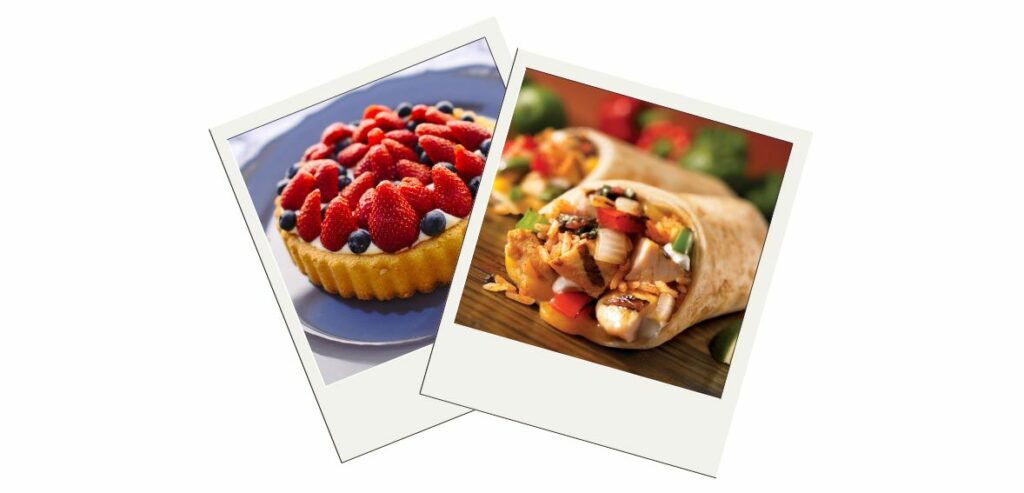
In the era of Instagram and TikTok, how your dishes look in photos can be just as important as how they taste. A high-quality photograph of food can attract more customers. Here’s how to make sure your menu looks irresistible in pictures:
- Catch the Best Light: Shoot your dishes in natural, indirect light. Skip the flash to avoid harsh shadows and too-bright spots for that perfect glow.
- Keep It Simple: Use plain backgrounds for your food photos. It helps keep the focus on the dish without any distractions.
- Mind Your Plates: The stage for your food matters. Use only the best plates or bowls and wipe away any smudges or loose bits that might steal the spotlight from your dish.
- Choose Your Stars Wisely: Only take pictures of dishes with ingredients that look their best—imagine bright green lettuce, fluffy pastries, and glossy chocolate. A little trick to make ingredients pop? A dab of oil or a mist of water for that fresh look.
- Garnish Wisely: For soupy or stewy dishes, a sprinkle of herbs or a slice of lemon can add a splash of color and texture, making them more photogenic.
- Play with Angles: Not all dishes are created equal—photographically speaking. Some look amazing from the side (like a pasta bowl), while others shine from a bird’s-eye view (like a pizza). Experiment to see what works best.
Need to improve your photography skills? Consider hiring a pro. Professional photos can elevate your restaurant’s image and attract more customers.
7. Utilize Google Ads
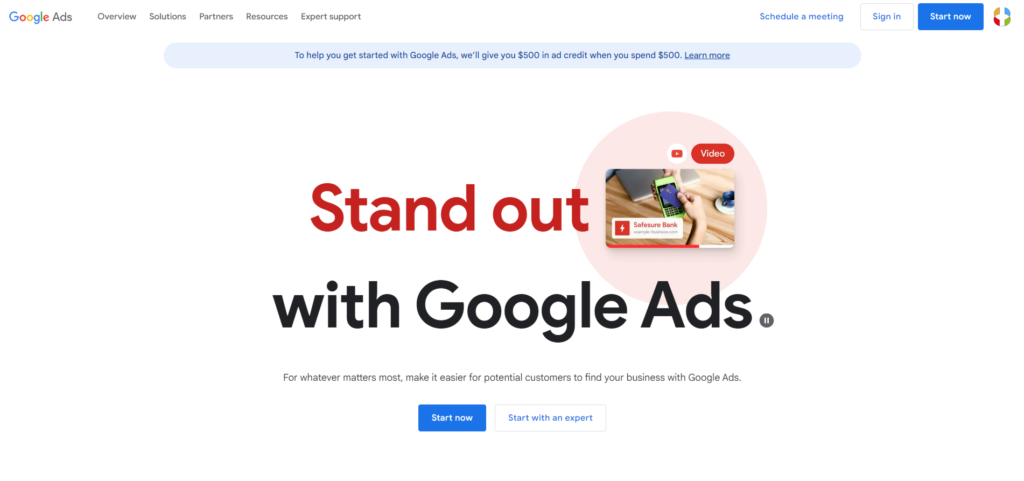
Image source
While organic traffic is valuable, you might need more to ensure your restaurant stands out among the competition. If you’re stuck with restaurant advertising or contemplating ad strategies, consider leveraging Google Ads.
With Google Ads, you can easily launch a PPC advertising campaign. This means you only pay when someone clicks on your ad, making it a cost-effective option. Google Ads offers various formatting options and allows you to target specific search terms and phrases used by your audience. By bidding on these terms, you can increase visibility and potentially attract more leads and sales to your business.
Google offers a range of options to target your ads effectively, allowing you to specify where you want your ads to be displayed, such as targeting searchers within a certain distance of your restaurant(s). Once your ads are set up, you can choose the searches where you want your ads to appear. There’s no limit to the number of search phrases you can target, ensuring your ad appears when someone searches for any of these “keywords.”
Next, you’ll set a budget cap, ensuring you never exceed your monthly spending limit. You have the flexibility to adjust or pause your campaign at any time. Google’s algorithm determines the order in which ads are displayed, considering factors like relevancy to the search term and the maximum bid per click you’ve set.
Monitoring your account’s performance is crucial. You’ll want to optimize your settings to ensure your ads appear prominently on search pages while maintaining a reasonable cost per click. Google Ads can yield significant results, but managing your account diligently is essential to maximize your return on investment and make sure to spend your budget wisely with sufficient returns.
8. Partner with an Influencer

Teaming up with local food bloggers or social media stars can put a restaurant on the map. Their genuine reviews and eye-catching photos can introduce your restaurant to more people and help build trust in your brand. It is not just about teaming up with anyone famous but about finding the right fit. Look for influencers who share your restaurant’s spirit and can genuinely get excited about your food to their followers.
Here’s how to nail down the perfect influencer partnership:
- Know Your Audience: Start by determining who you’re trying to reach. What are their ages, where do they live, what do they like, and how do they decide where to eat? This helps you match with influencers who speak directly to your kind of crowd.
- Do Your Homework: Dive into social media to see where your potential customers hang out. Is it Instagram, Facebook, TikTok, X, or maybe YouTube? Look for people talking about the kind of food you serve or the vibe you’re offering, using hashtags to narrow your search.
- Look Beyond the Numbers: Don’t get dazzled by follower counts alone. You want someone who gets a lot of likes, comments, and shares because it shows they really connect with their audience. Check out their previous posts to see if their style and interests align with what your restaurant is all about.
- Make the Connection: Start engaging with potential influencer partners by liking their posts, leaving comments, and joining in the conversation. When you’re ready, reach out with ideas to work together that benefit both of you, like offering them a special meal experience or creating unique content about your restaurant.
9. Use Social Media

Social media is one of the most potent tools for marketing your restaurant. It’s all about getting the word out there and bringing new folks through your doors. By sharing those drool-worthy dish photos, fun event snapshots, and cool behind-the-scenes looks, you can get more customers on social media than with conventional marketing tools. Social media has an amazing ability to spread your message far and wide.
To make sure you get noticed, there are a few golden rules to follow:
- Post Regularly: Staying active on social media is essential. Algorithms love accounts that keep buzzing with activity. Plus, posting about 2 or 3 times weekly keeps you on your customer’s radar.
- Short Videos: Social media and short stories emerged a few years ago. But they have become popular over the years, and most spend much time watching short videos and stories. They consist of images or videos that typically vanish after 24 hours. You can leverage these stories to showcase your restaurant’s ambiance, highlight mouth-watering dishes, or post pictures of interested diners to click and post their photographs enjoying the food.
- Hashtags Help: Think of hashtags as little helpers that make your posts easier to find. They’re like signs pointing towards your restaurant in the vast world of social media, guiding interested customers right to your door.
- Chat with Your Customers: Social media isn’t just a one-way street. If someone asks about your menu or where you’re located, jump in with an answer. Have you got a new dish, or are you considering changing the menu? Ask for feedback. It’s a great way to show your customers you value their thoughts and keep the conversation going.
10. Utilize UGC Content

User-generated content (UGC) is reliable. Use it as your marketing tool. UGC includes social media posts and reviews generated by real people who can be your customers. From snapshots and videos captured at your restaurant to online feedback and social check-ins, these users are a goldmine of excellent advertising for your restaurant. Your customers’ posts can be pure gold for your restaurant’s vibe and visibility.
There are several effective methods to encourage user-generated content (UGC) for your restaurant:
- Social Media Contests: Organize contests on social media platforms to engage your audience. Offer prizes to winners and encourage participants to share their experiences with your brand, including your restaurant’s culture and delicious dishes.
- Share Behind-the-Scenes Content: Offer glimpses behind the scenes to connect with your audience and highlight the unique aspects of your restaurant. This type of content adds authenticity and fosters a stronger bond with your customers.
- Create a Branded Hashtag: Develop a unique hashtag for your restaurant to encourage customers to share their experiences on social media. This will allow you to easily track and showcase user-generated content related to your brand.
- Display Reviews: Showcase customer reviews on your website and social media pages. Positive feedback can influence potential customers’ decisions. Additionally, consider incorporating user testimonials into your menu pages to provide further validation.
- Share Regular Customer Experiences: Regularly feature customer experiences on your social media platforms. Incorporating UGC into your social campaigns can significantly boost engagement, increasing brand visibility and loyalty.
Conclusion
Mastering restaurant marketing is essential to success in the highly competitive culinary industry. Restaurant marketing strategies are not just limited to attracting customers but also about developing long-term relationships, fostering a strong sense of community, and improving your restaurant’s reputation. You can enhance your restaurant’s visibility and boost sales by adopting a customer-centric approach, creating a consistent brand identity, and utilizing various marketing channels such as social media, delivery apps, and influencer partnerships.
Remember, marketing is not a one-time effort but an ongoing process of engaging with your audience, adapting to trends, and staying relevant in a constantly changing industry. By implementing the tips and tricks provided, you can position your restaurant for sustained growth and continued success both now and in the future. So, embark on this journey confidently, knowing that your restaurant can thrive in today’s competitive culinary landscape with the right marketing strategies.

